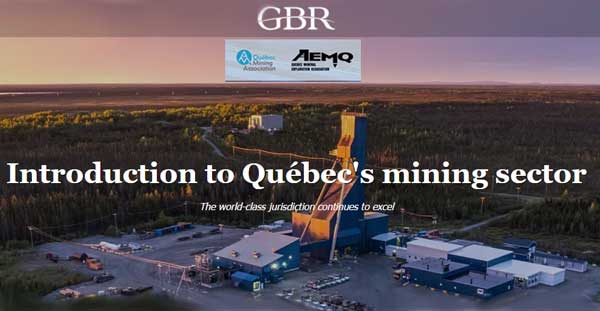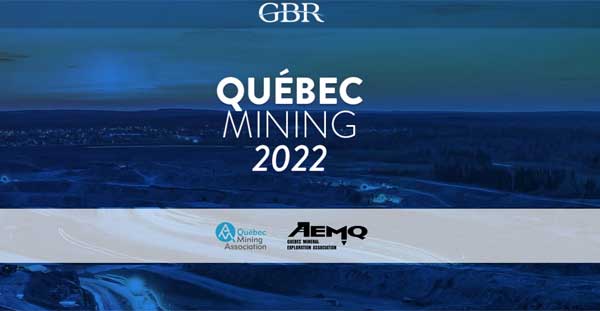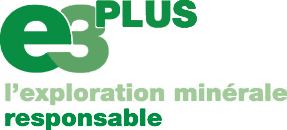Selected Excerpts from ‘Québec Mining 2022’
- The complete digital version of this year’s publication can be found at https://projects.gbreports.com/quebec-mining-2022/
- Cartier Resources is mentioned on pages 17, 18, 21 and 24. We have extracted all mentions and consolidated them here.
Brownfield exploration in the Abitibi greenstone belt
The Abitibi greenstone belt is a tier-one mining district with a rich history of proven endowment. From 2003 to 2006, no less than 10 mines were brought into production in the region. Among them ran a striking similarity: none were new discoveries. Canadian Malartic, a shining example, was the combination of four past-producing mines turned open pit. It is this time-honored consistency that attracts resource companies and investors alike, who see brownfield projects in the Abitibi as low-risk alternatives to fresher prospects in less explored regions. After all, many believe the best place to find a mine is in the shadow of an old operation.
Cartier Resources president and CEO Philippe Cloutier hopes his company’s flagship Chimo project will be another triumph of the strategy for exploration companies to pursue advanced-stage gold projects. Chimo had produced in the mid-1960s and mid-1980s before being sold to a final operator who mined it until 1997 before shutting it down. “Chimo ceased production not for lack of ore but because of the price of gold at the time and the negative light the Bre-X scandal cast on the mining industry,” explained Cloutier. “Yet its endowment did not go anywhere, and we were thrilled to acquire it.”
In acquiring the property, Cartier also gained access to a database of 4,000 drill holes and 60,000 assays, enabling the company to kickstart a robust exploration program. To further its efforts, Cartier is conducting a full year, C$6 million drill program at Chimo.
Interview with Jose Vizquerra, CEO, O3 Mining
What led to the company’s decision to sell its East Cadillac property in exchange for shares of Cartier Resources?
We saw a strategic opportunity in reallocating components of our portfolio to maximize value. We had previously sold the Garrison project to Moneta Gold forming the very robust Tower Gold project. Most recently, we exchanged the East Cadillac Property for 17% of Cartier Resources, a company that has around 2 million oz Au in one single ore shoot. With our tenements, they will be able to explore systematically to increase the resources of the project. If they do that on a US$1 per share basis, we will see a positive impact.
Interview with Philippe Cloutier, President and CEO, Cartier Resources
What are the operational upsides to Québec?
“There are two basic rules in the mining industry. The first is to make sure what you’re going after is findable. Before you even do that, however, you have to make sure you can mine it. The Abitibi greenstone belt is a tier-one district with over 100 years of proven endowment that has provincial and national support backing its development.”
“There is no need to worry about the long term – gold in the ground does not rust. Fortunately, Cartier Resources has more cash than most, so we will continue to push forward.”
What makes the Abitibi greenstone belt so attractive to Cartier Resources, and how do the historic activities of the region fit with the company’s strategy to focus on advanced gold projects?
The Abitibi greenstone belt is a tier-one district with over 100 years of proven endowment that has provincial and national support backing its development. In the last bull run from 2003-2006, no less than ten mines were brought into production. The one common denominator for all ten deposits was that none of them were new discoveries. As an example, Canadian Malartic was four past-producing mines turned open pit.
Cartier Resources’ flagship Chimo is another example. It produced in the mid-1960s and mid-1980s before being sold to a final operator who mined it until 1997. Over a 30-year period, Chimo produced just under 400,000 oz Au. It ceased production not for lack of ore but because of the price of the gold at the time and the negative light the Bre-X scandal cast on the mining industry. Yet its endowment did not go anywhere, and we were thrilled to acquire it.
How much potential does Chimo presently hold?
When Cartier Resources changed its strategy from focusing on grassroots exploration to shopping for projects that had great historical resources, Chimo, Benoist, Wilson, and Fenton all stuck out to us and are all part of our present portfolio. It just so happened that Chimo had infrastructure from past production, so we had access to a database of 4,000 drill holes and 60,000 assays. The resource estimate at Chimo indicated the mine grows laterally and at depth, and at depth we would be crossing onto O3 Mining territory. As a result, O3 sold us the property in exchange for a significant share position alongside Agnico Eagle, and by consolidating, we increased the ounce count considerably.
Has the current investment climate impacted Cartier Resources’ operations?
One sentiment investors cannot tolerate is fear. When fear takes hold of the market, the last thing you want to hold is junior stocks. Unfortunately, when this happens, you crystalize your loss, and everybody suffers. What should be done instead is to pause for reflection on whether a project has strong fundamental geological value, cash in the bank, corporate sponsors, social acceptance, and drillers available. If this is the case, there is no need to worry about the long term – gold in the ground does not rust. Fortunately, Cartier Resources has more cash than most, so we will continue to push forward.
How do considerations for Cartier Resources’ shareholders factor into your plans?
It is more responsible to let the big players develop mines. From an ESG standpoint, they have the environmental departments and resources to do things well. From a financial standpoint, when a junior attempts to do what the seniors do, they spend significantly more money given economies of scale. Producers are happy to watch you dilute your shareholder value to begin construction and wait to buy the project off you once you have significantly de-risked it and are no longer able to proceed. It is our fiduciary duty to protect shareholder value and recognize this. That said, we are pricing out the process of building the mine to compare it with bids.
Along those lines, seniors have encouraged exploration companies to consolidate. The problem is that unlike when producers consolidate, when juniors consolidate, they do so at the detriment of their shareholders.
What role does ESG play in Québec?
Unfortunately, many companies do a lot of lip service when it comes to ESG. This is not the case for companies based at or near their operations. Those living near or on-site will naturally be better stewards of the environment than those who cannot directly see their impact. Québec is proactive in the sense that when you start a project in the province, you must bond the money for a reclamation. Something else I appreciate about Québec is that the money stays near the mine.
$ECR.V #gold #abitibi



